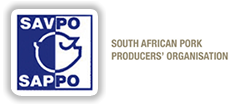By Dr Heinz Bodenstein, Charles Street Veterinary Consultancy
Foot-and-mouth disease (FMD) is a highly contagious disease caused by a virus that affects all cloven hoof animals (ruminants, pigs and camels). The FMD virus is transmitted predominantly by direct contact through bodily secretions and excretions of infected animals, but can also be transmitted to susceptible animals by swill feeding (especially milk products), contaminated objects and people. Saliva of an acutely infected animal contains the highest concentration of virus when compared to any other bodily secretion or excretion.
After inhalation (mostly ruminants) or ingestion (mostly pigs) the virus replicates in the cells that line the oral cavity and upper respiratory system. From here the FMD virus moves to the regional lymph nodes and then spreads via the blood and lymph to the rest of the body.
As the name implies, foot-and-mouth disease affects the foot (claw) and mouth. The development of the ulcerated lesions typically seen with FMD is dependent on two main factors. Firstly the amount of virus present in a particular area and secondly the amount of friction or irritation a particular area is subjected to. This is the reason why pigs have lesions on their snouts (due to sniffing), cows have lesions on their teats (due to milking) and warthogs have lesions on their “knees” (due to their feeding behaviour). FMD is more severe in intensively reared pigs than other species, being responsible for severe clinical disease in adult and grower pigs, and high mortality in piglets. Pigs are also the most efficient in excreting the FMD virus as they are able to release massive amounts of the virus, but animals that recover from the disease do not remain carriers as seen in other species.
The most important carrier and reservoir animal in South Africa is the African buffalo. Most FMD infections of African buffalo that are not kept in captivity go unnoticed. The buffalo then carries the virus for prolonged periods of time and is able to transmit the disease. It is thus practically impossible to eradicate FMD in South Africa. This is the reason why there are control zones around areas such as the Kruger National Park and borders of Botswana, Mozambique, Zimbabwe and Swaziland. These zones are responsible for keeping FMD within these areas and making the rest of the country free of FMD.
Countries that have been successful in eradicating FMD have done so at a high cost and place import restrictions on countries that fail to control FMD. That is why FMD is the most economically important disease of Southern Africa despite the fact that the disease has a comparatively low impact on extensive cattle farming practised in FMD positive areas.
There is a vaccine available for FMD, but the problem with the vaccine is that it does not prevent an animal from getting the virus or transmitting it to other animals, but prevents them from becoming clinically ill. Animals are thus only vaccinated in infected zones and just around infected zones to limit the loss from FMD.
People can become infected with the FMD virus, but clinical disease is rare and mild in infected people. It should also be kept in mind that animal products from infected animals are safe for human consumption.
In conclusion, FMD is not an important disease in commercial pigs because of the fact that commercial piggeries are not located near FMD positive zones, but can play a major role in the spreading of the virus in an FMD outbreak. It is also a disease that has severe financial implications in that it has an effect on export and might lead to a complete slaughter out of an infected herd.



 PO Box 36207,
PO Box 36207,